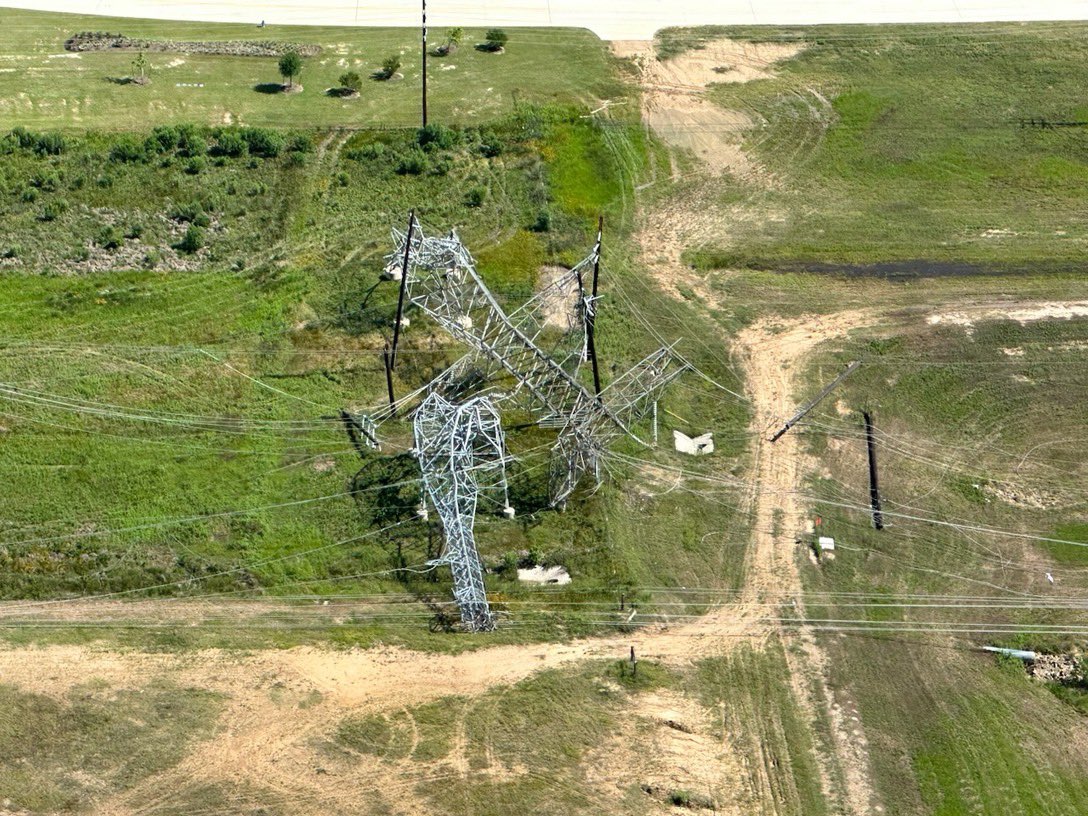

Globally, extreme weather disasters occur every day. According to the World Meteorological Association, between 1970 and 2019 these disasters caused 2.06 million deaths and $3.64 trillion (USD) in losses. In fact, 50% of all recorded disasters are due to weather, climate and water hazards. Seven of the top 10 costliest disasters in that period occurred in the U.S.
In many parts of the United States, severe storms are expected during the winter, and that was certainly true this year as Ember, Finn and Gerri brought severe weather to much of the U.S. mainland. However, it is not as common to see the level of severe storms that the U.S. has witnessed in the last few months.
From the Gulf Coast to the Midwest, across the Great Plains and even into states that are rarely hit by severe storms, there has been seemingly unceasing onslaught of severe weather this year.
As the atmosphere transitions out of El Niño, there is a constant train of moist gulf air meeting up with cool air coming over the Rocky Mountains. For many states, hearing that severe weather is on its way is becoming a regular – even weekly or daily – occurrence.
As of May 22, we have already had more than 700 tornadoes, many as part of a winter or spring storm. To make matters worse, hurricane season begins June 1 and the National Oceanic and Atmospheric Administration predicts it is going to be an above-normal season.
This profile focuses on the most impactful and severe weather events across the U.S., especially those that affect marginalized and at-risk populations. While there is significant overlap, it will focus on the impacts that aren’t addressed in our 2024 U.S. Tornadoes profile and the upcoming 2024 Atlantic Hurricane Season profile, which will cover storms and floods directly connected to a tropical system.
(Photo: Storm damage in Texas, May 18, 2024. Credit: Office of Commissioner Lesley Briones via X)
Latest Updates
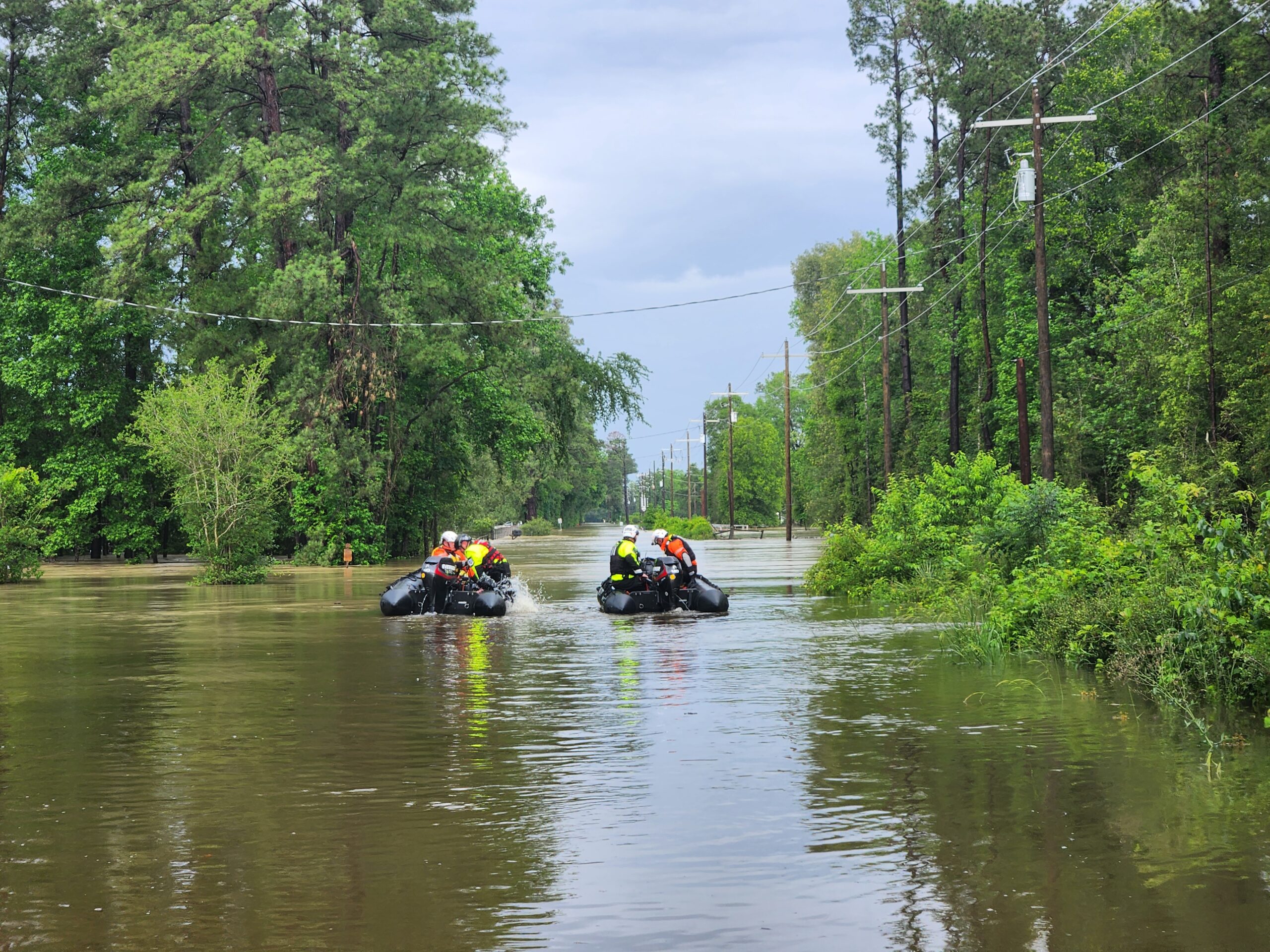
Adapting to the new normal: Philanthropic responses to a world of constant disasters

What we’re watching: Weekly disaster update, July 8
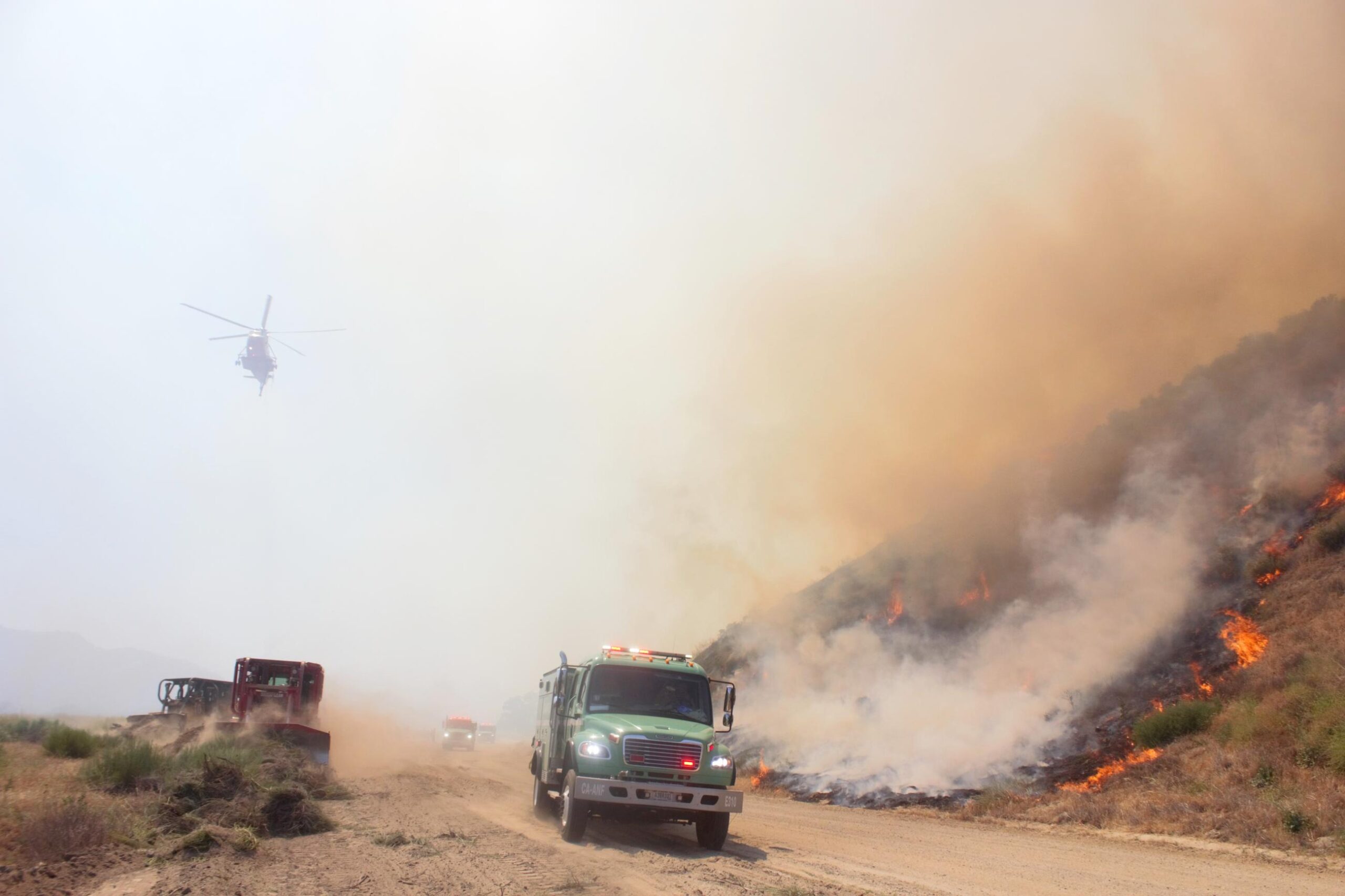
What we’re watching: Weekly disaster update, June 24

Helping rural communities affected by recent severe weather

What we’re watching: Weekly disaster update, June 10
Key facts
- A derecho (said with a softer “ch” as in “cheese” instead of a hard “ch” as in echo) is a line of intense, long-lived and widespread thunderstorms that move quickly across a long distance.
- According to the National Weather Service, “if the wind damage swath extends more than 240 miles (about 400 kilometers) and includes wind gusts of at least 58 mph (93 km/h) or greater along most of its length, then the event may be classified as a derecho.”
- While the magnitude of damage from a derecho is often compared to the damage from a hurricane, derechos are not “inland hurricanes.” Hurricanes form around a central “eye” and have rotational winds that rotate around the center, while derechos form in a line and have straight-line winds that extend out from the derecho itself.
- While a normal storm can be predicted by weather forecasters, rain bands can often stall or drop large amounts of rain in a short period, leading to unpredictable and devastating flooding and other damage. Derechos are also hard to predict because they may develop quickly.
- At least eight people died in Texas as a result of the May 16 derecho. Three others died in Louisiana as a result of the tornadoes and high winds that spun off the derecho system.
Minnesota flooding – Late June
As of the end of June, over half of Minnesota is underwater. Flooding due to severe storms started in the middle of June and continued for more than two weeks.
The two most affected areas are near Duluth and in southwest Minnesota, but a major disaster declaration has been requested for 42 counties. As of June 30, FEMA has approved a federal disaster declaration for 22 counties in Minnesota impacted by flooding.
Although recent dry conditions have helped, damage to dams and the resultant loss of crops and infrastructure continue to affect the state. Damage assessments are underway and although the disaster declaration means federal aid is on its way, this is unlikely to cover the costs of destroyed infrastructure and agricultural loss in the area.
Iowa and South Dakota flooding – Late June
- Rock Valley in Sioux County, Iowa is one of several communities in the area that were submerged after heavy rains caused multiple rivers in South Dakota and Iowa to exceed flood stage and overtop banks.
- At least 1,900 properties in northwest Iowa were damaged or destroyed
- The town of Spencer, Iowa was flooded by the Little Sioux River the morning of June 22 after the river level reached what the mayor called “epic proportions”, surpassing the record set in 1953.
- Iowa Gov. Kim Reynolds issued a state disaster proclamation and asked for federal assistance.
- Likewise, in South Dakota, Kristi Noem also declared an emergency after heavy rain caused flooding, shutting down several highways in the southeastern part of the state. The state’s largest city, Sioux Falls received seven inches of rain in three days. Canton, about 30 miles from Sioux Falls received 18 inches of rain.
New Mexico/Arizona/Nevada multiple hazards – Late June
New Mexico is facing a convergence of five disasters simultaneously. And monsoon season is just around the corner.
- Already in a state of drought, two devastating wildfires began burning in New Mexico on June 18.
- A haboob – a major dust storm – stretched hundreds of miles across New Mexico and Arizona – on June 20.
- On June 20, extreme rain also hit New Mexico and Las Vegas complicating the work to contain the fires. Some emergency crews had to be evacuated due to flooding, mudslides and blocked roads, and the heavy rain in burn scars of previous fires created debris slides as fallen and charred trees were picked up by rushing water.
Colorado hailstorm – May 20
- Tornado-warned thunderstorms brought high winds, heavy rain and hail the size of baseballs to the small town of Yuma, Colorado on May 20, leading to large hail and flooding. The weather and knee-deep hail felled trees and caused extensive impact damage to vehicles and homes, especially broken windows. Large equipment was required to remove the hail from the streets, which was still about 6 inches deep the next day.
- The small town of Yuma sits about 35 miles from the juncture of the Kansas, Colorado and Nebraska borders. It was hit by an EF-3 tornado in August 2023 and was still recovering before this storm hit.
Houston derecho – May 16
- A severe storm system with a 300-mile path, determined later to be a derecho, brought 100 mph straight-line winds to Texas on Thursday, May 16, causing extensive damage and knocking out power to almost a million customers.
- At least eight people died in Texas as a result of the May 16 derecho. Three others died in Louisiana as a result of the tornadoes and high winds that spun off the derecho system.
- The cluster of weather stretched from West Texas to the Florida Panhandle with the worst damage in Houston and the surrounding metropolitan area.
- A tornado was confirmed outside of Cypress, Texas because of the same system. Other tornadoes were also confirmed causing even more damage.
Florida – May 10
- Hurricane-force winds left two people dead in Tallahassee, Florida on May 10 and took out power to more than 100,000 people, some for an extended period.
- Several tornadoes were recorded during this storm system which swept the Gulf Coast.
Houston floods – late April/early May
- Back-to-back storms in late April and early May led to extensive flooding in several communities across Texas. As rivers swelled from the rain, so did water in reservoirs, and the opening of these reservoirs caused downstream flooding in low-lying areas.
- More than 200 people (and 150 animals) were rescued in early May after flash flooding hit Houston and Harris County.
Louisiana flooding and storms – April and May
- A series of storms hit Louisiana this spring, bringing several tornadoes to the state and causing damage from high winds and rain.
- A flash flood hit New Orleans on April 10. Since much of the city sits below sea level, pumps are required to pump the water out of the streets but can only remove a small amount per hour. At least 8 inches fell in a few hours, leading to floods that impacted homes, businesses and vehicles. At least 13 tornadoes swept the state on the same day, including an EF-2 tornado in Slidell, just outside New Orleans.
- On May 13, heavy winds and rain caused damage across southwest Louisiana leaving many without power for days. This area was badly hit by Hurricanes Laura, Delta and Sally in 2020.
- On May 16, hurricane-force winds swept through the state bringing down trees, tearing off roofs and causing other damage.
While there are many immediate needs in the wake of severe storms, funders should consider holding back funds in anticipation of the intermediate and long-term needs of the affected communities. Some of the needs will depend on the type of damage, as flood damage clean-up is different than wind damage clean-up.
Immediate needs
After severe weather, needs will depend on the type and amount of damage. Immediate needs may include temporary repair of damaged homes and businesses. This includes debris clean-up and waste management (which also continue into long-term recovery).
There will be a need to replace vehicles, personal belongings, appliances and furniture destroyed in the disaster.
Infrastructure issues
Power outages cause concerns related to food preparation and preservation, personal hygiene, lighting and maintaining temperature control.
While rebuilding the infrastructure is usually a government responsibility, smaller communities may not have the resources to provide their cost-share or to support writing state or federal grant applications. This is an area funders can support.
Rural communities
Recovery in rural communities is slower and requires “patient dollars.” Funders must understand that progress will not occur as quickly as it does in larger, more well-resourced communities. Investments should be made over time: Pledges of multi-year funding are very helpful, as is support for operating costs and capacity building.
Over 50% of all manufactured homes are located in rural areas around the U.S. Rural communities, in many cases, do not have access to social services, particularly disaster recovery assistance supports; thus, many rural families are more vulnerable to the impact of low-attention disasters that do not garner much media interest or donor support.
That said, while many rural communities do not have access to the same level of assistance as urban areas, the social fabric and human capital available in rural communities can be a powerful force multiplier of assistance investments.
Housing
People whose homes were damaged need new housing that is safe and affordable and/or support repairing their damaged homes. After a storm, displaced residents may face challenges finding housing that meets their needs and is affordable.
In many parts of the country, demand for housing outpaces supply, complicating recovery efforts. The ability to rebuild in rural communities is particularly challenging due to reduced economies of scale and the cost of transporting goods.
Affordability
Long-term repair and rebuilding of housing and businesses require additional funding beyond the initial infusion of funds to address temporary shelter and immediate needs. Without an additional injection of assistance, at-risk community members may not be able to recover.
Manufactured housing
Although manufactured housing can be physically vulnerable to storms, it also represents an affordable and accessible housing option. While 71% of mobile homes are owner-occupied, depending upon the location of housing, the homeowner may only own the building, not the land. Additionally, insurance is limited for manufactured housing, especially based on the age of the building.
CDP hosted a webinar about the increased risks manufactured homes face and their role in disaster recovery. Additionally, the Manufactured Home Disaster Recovery Playbook, created by Matthew 25 in 2023 for CDP, has videos, lessons learned and other information to assist funders in supporting manufactured home disaster recovery.
Insurance
After a disaster, even those with insurance may not be covered depending on the type of storm and the damage caused. For example, in the recent derecho on the Gulf Coast, people in Louisiana who had wind damage may be covered by their normal insurance policies, however those in Houston who have flood damage need to have a separate policy through the National Flood Insurance Program.
Numerous companies have withdrawn from the home insurance market in states across the country, including Louisiana and Florida. Finding insurance is increasingly difficult and more expensive.
CDP recently hosted a webinar about the insurance coverage crisis in an age of increasing disasters and the role of philanthropy in helping fill the gap. The recording is well-worth watching in this current climate of multiple severe weather events and declining insurance coverage in high-risk areas.
Cash assistance
A critical ongoing need will be unrestricted cash donations to support affected individuals and families. Direct cash assistance can allow families to secure housing, purchase items and contract services locally that address their multiple needs. It gives each family flexibility and choice, ensuring that support is relevant, cost-effective and timely. Cash assistance can also help move families faster toward rebuilding their lives. Cash also provides a much-needed jolt to local economies, which can also be a major boon to recovery.
Education and children
After a storm event with significant damage, schools may be closed for a few weeks to help with recovery. Unfortunately, this comes at a time when students need the social support of their friends and teachers, especially as their families may be busy with their recovery activities.
Child care and child support programs are particularly helpful during this time and can reduce the need for child trauma counseling in later months. Funder investment in these programs has long-term benefits for children and their families.
Health care
There are often immediate health needs after storms related to injuries that arise as people are hit by falling debris, spend time in flood water or lose access to services because of damage to health centers and hospitals.
Roads may be blocked by debris or flooding, preventing health care workers from reaching their jobs or patients from reaching their providers.
It is important to think about more than storm-related injuries. Some people may need access to medical care to address acute or chronic, pre-existing health issues. Surgeries or treatments such as dialysis may be delayed, further worsening conditions.
Funders can help rebuild medical facilities, including equipment, or support temporary staff who can help meet the increased needs of the community.
Emotional and spiritual care
Emotional and spiritual care will be critical, especially for families of people killed in the storms, first responders and those in the direct path of the storm or its impacts. Long-term mental health and trauma support will also be required. Some of the affected communities may have been impacted by previous events, which has left them with increased trauma from natural hazards.
There is also severe risk of poor emotional health, suicide or self-harming behaviors among people with pre-existing mental health issues. Farmers or ranchers also have unique needs that require support after disasters. The loss of generational family property is often devastating. CDP’s Midwest Early Recovery Fund made a video to help funders understand this issue.
Supporting locally-based and culturally-competent mental health resources is an excellent way for funders to build individual and community resiliency and support mental health.
Business recovery
Business recovery is always critical to helping communities rebuild. When storms damage or destroy businesses, it negatively impacts people’s livelihoods. Given the higher costs of living and ongoing recovery from COVID-19, this is particularly challenging for small businesses.
Funders can support small businesses with grants and loans. Some businesses may need help meeting their deductible. Others may want to take the opportunity to improve their building to prevent damage in future storms. Loans with minimal interest could be an opportunity for funders to support the enhancement or expansion of a small business.
FEMA’s new Individual Assistance program now supports self-employed individuals with recovery from disasters, but there are always people who will not get the assistance they need. This is another opportunity for funders to use the flexibility of their funding to address gaps.
Navigating the disaster assistance process
Disaster assistance may be available in various forms and from different sources. People often need help navigating the assistance process, particularly undocumented people and people whose first language is not English. Government assistance is vital but can also be cumbersome and confusing for households and communities.
For example, Small Business Administration (SBA) disaster loans are part of the federal sequence of assistance for FEMA’s Individual and Households Program (IHP). Many people may not understand that the loans, though they originate from the SBA, can be made to individuals/families. FEMA also recently set equity as a strategic priority and changes to the Individual Assistance program are helping get more support into the hands of people who need it the most.
Funders can support organizations that work to help people complete their submissions and file appeals.
Disaster case management
In most situations, disaster recovery navigation services – also called disaster case management – can be a valuable and hugely impactful resource in expediting the recovery process, especially if governmental disaster assistance is available. Disaster case managers can provide essential support and guidance in accessing resources and navigating the road to recovery.
In some disasters, case management is provided with funds from the federal and/or state government, but the timing does not always align with the needs of the community. Funders can fill the gap from the time immediately after a disaster until a government-funded case management program starts.
CDP has a disaster case management toolkit that can be helpful for communities and funders looking to create local case management programs.

To support storm recovery efforts, please donate to CDP’s Disaster Recovery Fund.
Contact CDP
Philanthropic contributions
If you have questions about donating to the CDP Disaster Recovery Fund, need help with your disaster-giving strategy, or want to share how you’re responding to this disaster, please contact development. (Flooding in Texas, May 6. 2024. Photo credit: Texas Division of Emergency Management via X)
Recovery updates
If you are a responding NGO, please send updates on how you are working on recovery from this disaster to Tanya Gulliver-Garcia. We welcome the republication of our content. Please credit the Center for Disaster Philanthropy.
Philanthropic and government support
A federal disaster declaration (DR-4781) was issued for Texas Severe Storms, Straight-line Winds, Tornadoes, and Flooding from April 26. As of May 23, 912 applications for individual assistance have been approved for a total of $3.6 million.
Resources
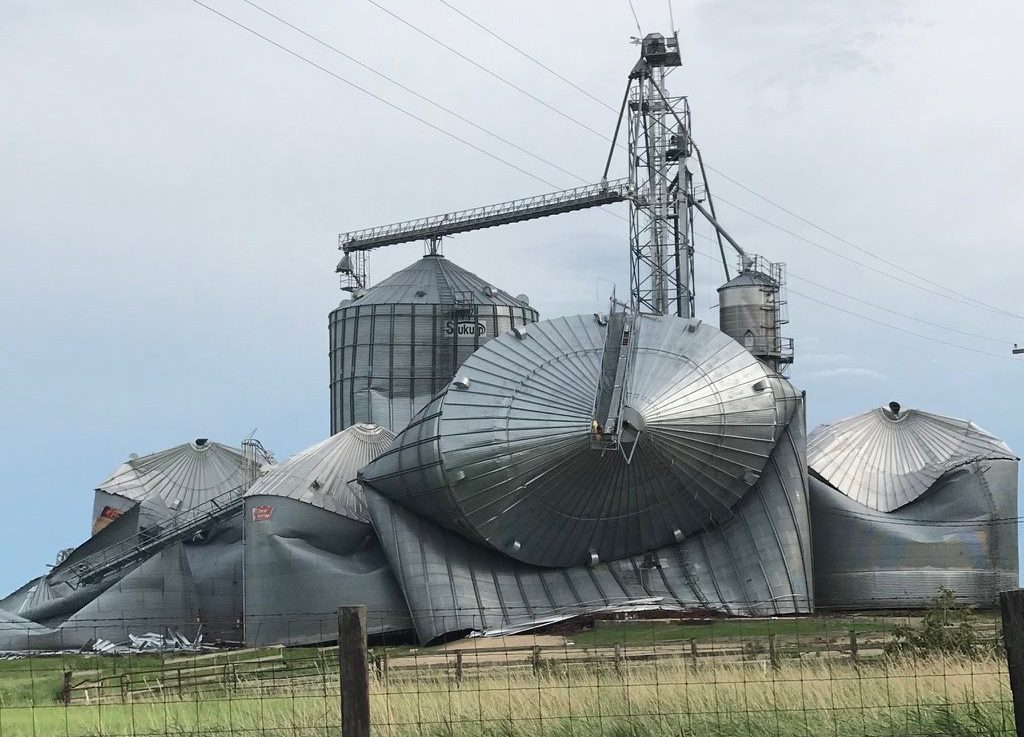
Derecho
A derecho is a line of intense, long-lived and widespread thunderstorms that move quickly across a long distance.

Tornadoes
Tornadoes are powerful storms that can cause considerable damage to communities. They can break branches from trees or lift houses off their foundations. The speed with which they form, and their variable intensity, make them some of the most unpredictable disasters on the planet.
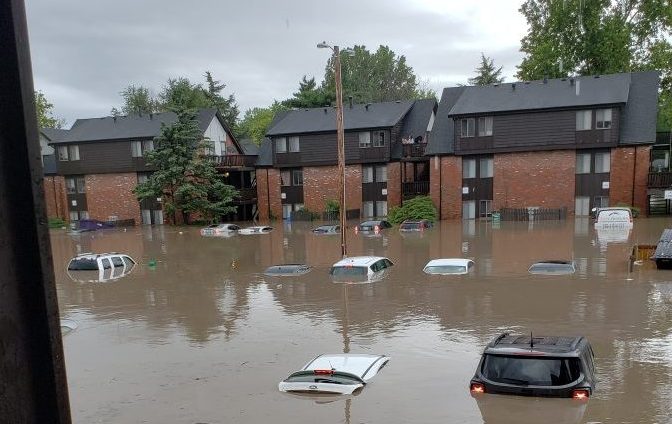
Floods
Flooding is our nation’s most common natural disaster. Regardless of whether a lake, river or ocean is actually in view, everyone is at some risk of flooding. Flash floods, tropical storms, increased urbanization and the failing of infrastructure such as dams and levees all play a part — and cause millions (sometimes billions) of dollars in damage across the U.S. each year.